I am trying to make a rotating zooming recursive golden triangle. It draws a golden triangle, then it draws another one inside it and so on. This was easy, but the challenge is making it zoom in and rotate around the point that the triangles are approaching.
To make it zoom in on that point infinitely I need to come up with the formula to calculate which point the triangles are approaching.
Running demo at this point: https://waltari10.github.io/recursive-golden-triangle/index.html
Repository: https://github.com/Waltari10/recursive-golden-triangle
/**
*
* @param {float[]} pivot
* @param {float} angle
* @param {float[]} point
* @returns {float[]} point
*/
function rotatePoint(pivot, angle, point)
{
const s = Math.sin(angle);
const c = Math.cos(angle);
const pointOriginX = point[0] - pivot[0];
const pointOriginY = point[1] - pivot[1];
// rotate point
const xNew = (pointOriginX * c) - (pointOriginY * s);
const yNew = (pointOriginX * s) + (pointOriginY * c);
const newPoint = [
pivot[0] + xNew,
pivot[1] + yNew,
]
return newPoint;
}
// https://www.onlinemath4all.com/90-degree-clockwise-rotation.html
// https://stackoverflow.com/questions/2259476/rotating-a-point-about-another-point-2d
// Position is half way between points B and C 72 and 72, because AB/BC is golden ratio
function drawGoldenTriangle(pos, height, rotation, color = [0,255,0,255], pivot) {
// golden triangle degrees 72, 72, 36
// golden gnomon 36, 36, 108
// AB/BC is the golden ratio number
// https://www.mathsisfun.com/algebra/sohcahtoa.html
const baseLength = (Math.tan(degToRad(18)) * height) * 2;
const pointA = rotatePoint(pos, rotation, [pos[0], pos[1] - height]); // sharpest angle
const pointB = rotatePoint(pos, rotation, [pos[0] - (baseLength / 2), pos[1]]);
const pointC = rotatePoint(pos, rotation, [pos[0] + (baseLength / 2), pos[1]]);
drawTriangle(pointA, pointB, pointC, [0,255,0,255]);
}
let i = 0;
function drawRecursiveGoldenTriangle(pos, height, rotation, pivot) {
drawGoldenTriangle(pos, height, rotation, [0,255,0,255], pivot);
i++;
if (i > 10) {
return;
}
const hypotenuseLength = height / Math.cos(degToRad(18));
const baseLength = (Math.tan(degToRad(18)) * height) * 2;
const goldenRatio = hypotenuseLength / baseLength;
const newHeight = height / goldenRatio;
const newRotation = rotation - 108 * Math.PI/180
const newPointC = rotatePoint(pos, rotation, [pos[0] + (baseLength / 2), pos[1]]);
// Go half baselength up CA direction from pointC to get new position
const newHypotenuseLength = baseLength;
const newBaseLength = newHypotenuseLength / goldenRatio;
let newPosXRelative = Math.cos(newRotation) * (newBaseLength / 2)
let newPosYRelative = Math.sin(newRotation) * (newBaseLength / 2)
const newPos = [newPointC[0] + newPosXRelative, newPointC[1] + newPosYRelative];
drawRecursiveGoldenTriangle(newPos, newHeight, newRotation, [0,255,0,255], pivot);
}
let triangleHeight = height - 50;
let pivotPoint = [(width/2),(height/2) -50];
let triangleLocation = [width/2, height/2 + 300];
let triangleRotation = 0;
function loop() {
i = 0;
const startTime = Date.now()
wipeCanvasData();
// triangleHeight++;
// triangleRotation = triangleRotation + 0.005;
// drawX(pivotPoint)
// drawX(triangleLocation)
// Pivot point determines the point which the recursive golden
// triangle rotates around. Should be the point that triangles
// approach.
drawRecursiveGoldenTriangle(triangleLocation, triangleHeight, triangleRotation, pivotPoint);
updateCanvas()
const renderTime = Date.now() - startTime
timeDelta = renderTime < targetFrameDuration ? targetFrameDuration : renderTime
this.setTimeout(() => {
loop()
}, targetFrameDuration - renderTime)
}
loop()
What would be the formula to calculate the point that recursive golden triangle is approaching? Or is there some clever hack I could do in this situation?

